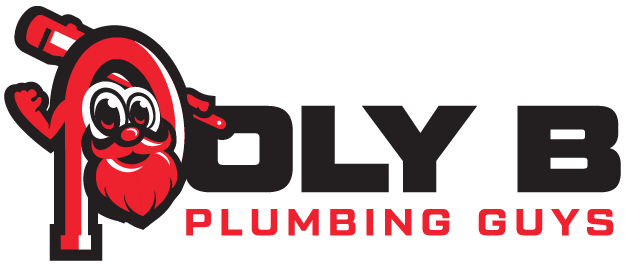The Steps for Calgary Poly B Replacement in Your Home
Polybutylene (often referred to as Poly B) was once a popular choice for plumbing in residential homes due to its affordability and ease of installation. However, over time, it became evident that Poly B pipes were prone to deterioration and leaks, leading to widespread problems and costly repairs for homeowners. If you have Poly B plumbing in your home, it’s crucial to consider replacing it with a more reliable and durable piping system.
Outline the steps to pursue Calgary Poly B replacement within your home and why it’s essential to do so.
Step 1: Inspection and Assessment
The first step in removing Poly B from your home is to conduct a thorough inspection and assessment of your plumbing system. This includes identifying all areas where Poly B pipes are installed, such as behind walls, in the basement, or in crawl spaces. It’s essential to have a clear understanding of the extent of the Poly B plumbing in your home to plan for its removal effectively.
Step 2: Turn Off the Water Supply
Before you begin any removal work, turn off the water supply to your home. Locate the main shut-off valve, typically located in the basement or near the water meter. Make sure that the water is completely turned off and that there is no residual pressure in the plumbing system.
Step 3: Drain the Plumbing System
To remove Poly B pipes safely, you’ll need to drain the plumbing system. Open all faucets, including outdoor spigots, to allow any remaining water to drain from the pipes. You should also flush all toilets in your home. This step is crucial to prevent water from spilling during the removal process.
Step 4: Remove Fixtures and Appliances
In some cases, you may need to remove fixtures and appliances that are connected to the Poly B pipes. This can include sinks, toilets, and water heaters. Carefully disconnect these fixtures to access the pipes behind them. Be prepared to replace these fixtures with new ones after the Poly B removal is complete.
Step 5: Cut and Remove Poly B Pipes
With the water drained and fixtures removed, it’s time to cut and remove the Poly B pipes. Use a pipe cutter or saw to carefully cut the Poly B pipes into manageable sections. Be cautious when working in confined spaces, as you may encounter sharp edges or obstructions.
Step 6: Dispose of Poly B Pipes Properly
Poly B pipes should be disposed of according to local regulations and guidelines. Many recycling centers accept plastic pipes, so check with your local recycling facility for the proper disposal procedures. It’s essential to dispose of Poly B pipes responsibly to minimize environmental impact.
Step 7: Install New Piping System
Once the Poly B pipes are removed, it’s time to install a new, reliable piping system. Many homeowners choose to replace Poly B with PEX (cross-linked polyethylene) or copper piping, both of which are known for their durability and resistance to leaks. Work with a licensed plumber to ensure the new plumbing system is installed correctly and up to code.

Step 8: Pressure Test and Inspect
After the new piping system is installed, it’s crucial to pressure test it to check for any leaks or issues. This test involves pressurizing the system and monitoring it for a specified period to ensure there are no leaks. If any problems are detected, they should be addressed promptly to prevent future issues.
Step 9: Restore Fixtures and Appliances
Once the new plumbing system passes the pressure test and inspection, you can begin restoring fixtures and appliances in your home. This includes reconnecting sinks, toilets, water heaters, and any other fixtures that were removed during the Poly B removal process.
Step 10: Regular Maintenance and Monitoring
After replacing Poly B with a more reliable piping system, it’s essential to perform regular maintenance and monitoring of your plumbing to ensure its continued functionality and prevent issues. Be vigilant for signs of leaks, corrosion, or other problems, and address them promptly to avoid costly repairs in the future.
Why Remove Poly B?
The removal of Poly B pipes is essential for several reasons:
- Leak Risk: Poly B pipes are prone to deteriorate and develop leaks over time. These leaks can lead to water damage, mould growth, and costly repairs.
- Insurance Concerns: Some insurance companies may refuse to provide coverage or charge higher premiums for homes with Poly B plumbing due to its history of issues.
- Resale Value: Homes with Poly B plumbing may have reduced resale value and may be less attractive to potential buyers.
- Safety and Health: Water damage from Poly B leaks can compromise the structural integrity of your home and create an environment conducive to mould growth, which can be harmful to your health.
In conclusion, Calgary Poly B replacement in your home is a crucial step to ensure the safety, value, and functionality of your property. By following the steps outlined above and replacing Poly B with a reliable piping system, you can protect your home from potential water damage, insurance complications, and health concerns. It’s a worthwhile investment in the long-term integrity and value of your property.
For all of your Poly B replacement and general plumbing needs, come to The Poly B Plumbing Guys. If your home and plumbing system was developed within the mid 1980s to late 90s, there is a chance that Poly B has been utilized in your abode. Poly B can cause issues as aging Poly B is susceptible to leaks, which can culminate in water damage. The Poly B Plumbing Guys acts as a preventive measure against water leaks by approaching Poly B replacement in Calgary with an unmatched skillset. Just as we broach all plumbing repairs, our team pursues polybutylene pipe replacement meticulously as we replace your pipes, drywall, and paint.


